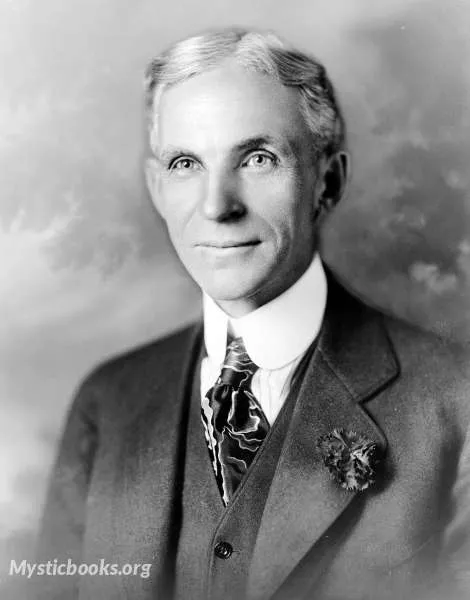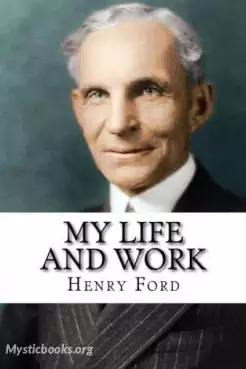
Timeline
Title
Country/Nationality
Henry Ford
Henry Ford was an American industrialist, business magnate, and founder of the Ford Motor Company, and chief developer of the assembly line technique of mass production. By creating the first automobile that middle-class Americans could afford, he converted the automobile from an expensive curiosity into an accessible conveyance that profoundly impacted the landscape of the 20th century.
His introduction of the Ford Model T automobile revolutionized transportation and American industry. As the Ford Motor Company owner, he became one of the richest and best-known people in the world. He is credited with "Fordism": mass production of inexpensive goods coupled with high wages for workers. Ford had a global vision, with consumerism as the key to peace. His intense commitment to systematically lowering costs resulted in many technical and business innovations, including a franchise system that put dealerships throughout North America and major cities on six continents. Ford left most of his vast wealth to the Ford Foundation and arranged for his family to permanently control it.
Ford was also widely known for his pacifism during the first years of World War I, and for promoting antisemitic content, including The Protocols of the Elders of Zion, through his newspaper The Dearborn Independent, and the book The International Jew.
Henry Ford was born July 30, 1863, on a farm in Springwells Township, Michigan. His father, William Ford (1826–1905), was born in County Cork, Ireland, to a family that had emigrated from Somerset, England in the 16th century. Ford was devastated when his mother died in 1876. His father expected him to take over the family farm eventually, but he despised farm work.
In 1879, Ford left home to work as an apprentice machinist in Detroit, first with James F. Flower & Bros., and later with the Detroit Dry Dock Co. In 1882, he returned to Dearborn to work on the family farm, where he became adept at operating the Westinghouse portable steam engine. He was later hired by Westinghouse to service their steam engines. During this period, Ford also studied bookkeeping at Goldsmith, Bryant & Stratton Business College in Detroit.
Ford married Clara Jane Bryant (1866–1950) on April 11, 1888, and supported himself by farming and running a sawmill. They had one child, Edsel Ford (1893–1943).
In 1891, Ford became an engineer with the Edison Illuminating Company of Detroit. After his promotion to Chief Engineer in 1893, he had enough time and money to devote attention to his experiments on gasoline engines. These experiments culminated in 1896 with the completion of a self-propelled vehicle, which he named the Ford Quadricycle. He test-drove it on June 4. After various test drives, Ford brainstormed ways to improve the Quadricycle.
Also in 1896, Ford attended a meeting of Edison executives, where he was introduced to Thomas Edison. Edison approved of Ford's automobile experimentation. Encouraged by Edison, Ford designed and built a second vehicle, completing it in 1898. Backed by the capital of Detroit lumber baron William H. Murphy, Ford resigned from the Edison Company and founded the Detroit Automobile Company on August 5, 1899. However, the automobiles produced were of a lower quality and higher price than Ford wanted. Ultimately, the company was not successful and was dissolved in January 1901.
With the help of C. Harold Wills, Ford designed, built, and successfully raced a 26-horsepower automobile in October 1901. With this success, Murphy and other stockholders in the Detroit Automobile Company formed the Henry Ford Company on November 30, 1901, with Ford as chief engineer. In 1902, Murphy brought in Henry M. Leland as a consultant; Ford, in response, left the company bearing his name. With Ford gone, Leland renamed the company the Cadillac Automobile Company.
Teaming up with former racing cyclist Tom Cooper, Ford also produced the 80+ horsepower racer "999," which Barney Oldfield was to drive to victory in a race in October 1902. Ford received the backing of an old acquaintance, Alexander Y. Malcomson, a Detroit-area coal dealer. They formed a partnership, "Ford & Malcomson, Ltd." to manufacture automobiles. Ford went to work designing an inexpensive automobile, and the duo leased a factory and contracted with a machine shop owned by John and Horace E. Dodge to supply over $160,000 in parts. Sales were slow, and a crisis arose when the Dodge brothers demanded payment for their first shipment.
In response, Malcomson brought in another group of investors and convinced the Dodge Brothers to accept a portion of the new company. Ford & Malcomson was reincorporated as the Ford Motor Company on June 16, 1903, with $28,000 capital. The original investors included Ford and Malcomson, the Dodge brothers, Malcomson's uncle John S. Gray, Malcolmson's secretary James Couzens, and two of Malcomson's lawyers, John W. Anderson and Horace Rackham. Because of Ford's volatility, Gray was elected president of the company. Ford then demonstrated a newly designed car on the ice of Lake St. Clair, driving 1 mile (1.6 km) in 39.4 seconds and setting a new land speed record at 91.3 miles per hour (146.9 kilometres per hour). Convinced by this success, race driver Barney Oldfield, who named this new Ford model "999" in honor of the fastest locomotive of the day, took the car around the country, making the Ford brand known throughout the United States. Ford also was one of the early backers of the Indianapolis 500.
When Edsel Ford, President of Ford Motor Company, died of cancer in May 1943, the elderly and ailing Henry Ford decided to assume the presidency. By this point, Ford, nearing 80 years old, had had several cardiovascular events (variously cited as heart attacks or strokes) and was mentally inconsistent, suspicious, and generally no longer fit for such immense responsibilities.
Most of the directors did not want to see him as president. But for the previous 20 years, though he had long been without any official executive title, he had always had de facto control over the company; the board and the management had never seriously defied him, and this time was no different. The directors elected him, and he served until the end of the war. During this period the company began to decline, losing more than $10 million a month ($149,560,000 today). The administration of President Franklin Roosevelt had been considering a government takeover of the company in order to ensure continued war production, but the idea never progressed.
His health failing, Ford ceded the company presidency to his grandson Henry Ford II in September 1945 and retired. He died on April 7, 1947, of a cerebral hemorrhage at Fair Lane, his estate in Dearborn, at the age of 83.
Books by Henry Ford

My Life and Work
Henry Ford profiles the events that shaped his personal philosophy, and the challenges he overcame on the road to founding the Ford Motor Company. Throughout his memoir, he stresses the importance of tangible service and physical production over rela...